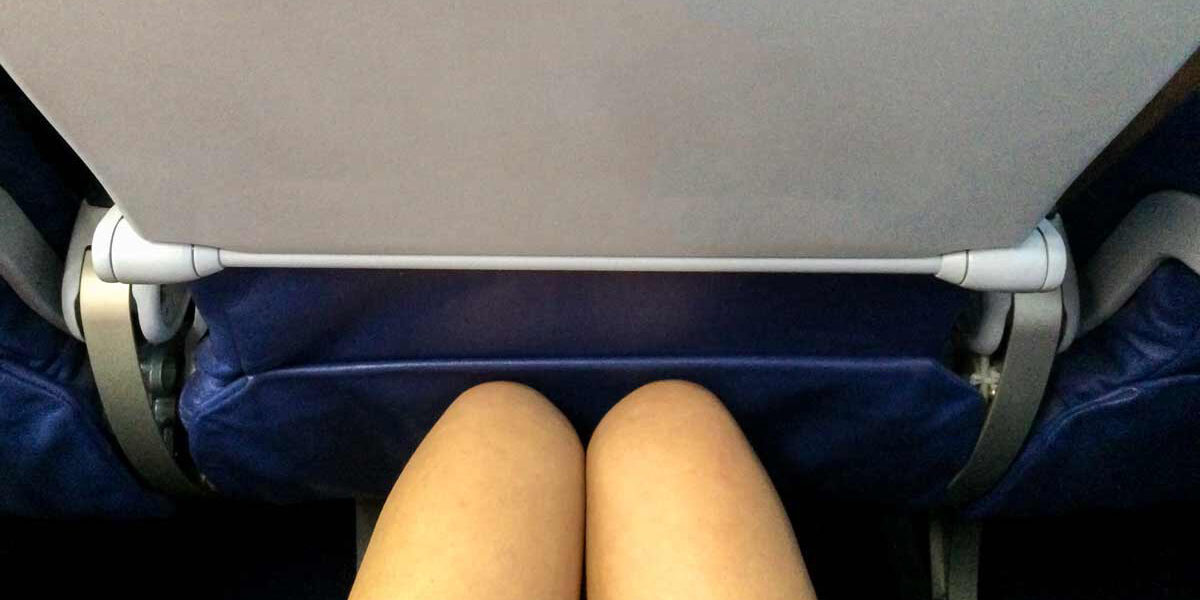‘Tis the season for visiting family, friends, and loved ones near and far, but all those hours spent cramped in a car or plane can sour the holiday spirit for anyone who suffers from varicose veins. When legs are idle, so is circulation, and sluggish blood flow means aching, swollen limbs and an increased risk of deep vein thrombosis (DVT)—a blood clot that can lead to a lethal pulmonary embolism.
Fortunately, there are ways to minimize varicose vein pain and leg fatigue so the condition doesn’t “bah humbug” your holiday travel plans. Here are a few tips that might help:
1. Embrace compression stockings
Compression stockings are medical-grade socks—available over-the-counter and in prescription-grade strength through your physician—that use graduated pressure from the ankle to the knee to support blood flow from your legs to your heart. Wearing compression socks for long stretches of travel time will reduce throbbing, swelling, and painful leg cramps so you can reach your destination with a festive twinkle in your eye instead of a distressed scowl.
2. Avoid constricting clothes
Health trumps style. You might look fabulous in tight-fitting, jet-setting fashions, but constricting clothes can exacerbate varicose vein pain and leg fatigue by hindering proper circulation (in contrast to compression socks, which are designed to be constricting in a medically specific way). Instead, opt for comfortable, loose-fitting outfits. After a few hours on the plane, your whole body will thank you.
3. Don’t sit for too long
Even if you have plenty of leg-room, sitting for extended periods of time limits blood flow to your legs—especially when they’re crossed. That’s why it’s crucial to stop every 1-2 hours when driving to stretch and move around. If you’re traveling by plane, walk up and down the aisles for a few minutes every couple of hours to stimulate the circulation in your legs.
4. Exercise in your seat
When harsh weather, turbulence, or space constraints prevent you from taking those much-needed stretching breaks, there are still ways to get your blood flowing while bound to your seat. Try simple stationary exercises like pumping your foot up and down on an imaginary gas pedal 20-30 times, which is great for stretching your calves. Other exercises include flexing your feet and pointing your toes 20-30 times, and rotating your ankle in small circles 10 times clockwise, then 10 times counterclockwise.
5. Elevate whenever possible
The last thing you’ll want to do after hours of sitting in a car or on a plane is sitting some more once you reach your destination, but that’s exactly what you should do for your beleaguered varicose veins. As soon as you have a chance, sit with your legs elevated. This will reduce the pressure of gravity and allow blood to flow easily back up to your heart. In fact, propping your feet up so they’re level with or a little higher than your heart is best.
It’s important to note that if pain or discomfort in your legs doesn’t fade after elevating, stretching, and compressing your legs in stockings, it might be a sign of DVT or a completely unrelated condition like sciatica, which is a nerve near your back that radiates pain down through your leg when pinched. So if you’re still not feeling holly-jolly by the next day after traveling, it’s a good idea to consult a doctor.
Tired of accommodating your varicose veins? We can help.
If you avoid traveling due to the associated pain from varicose veins—or if all the above tips aren’t enough to eliminate your pain and discomfort—maybe it’s time to consider having them removed entirely. At San Diego Varicose Vein Treatment Center, we offer several different options for customized treatment of varicose veins. You also get the peace of mind that comes from knowing you’re in the hands of a highly skilled and experienced cardiologist, Dr. Behzad Taghizadeh. Give us a call to schedule your consultation today.






